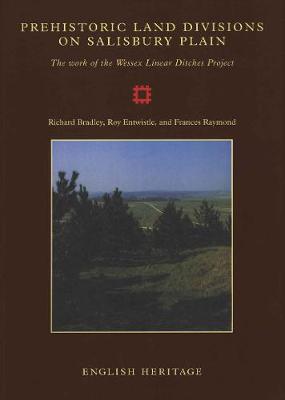English Heritage Archaeological Report
1 primary work
Book 2
Prehistoric Land Divisions on Salisbury Plain
by Richard Bradley, Roy Entwistle, and Frances Raymond
Published 15 June 2014
The Wessex Linear Ditches Project focuses on the region forming the heart of the Wessex chalklands, preserved by its location within a modern military training area. The report comprises three parts: a description of the archaeology of the project, an innovative analysis of the finds and environmental data, and a summary of the linear ditches and their context in late prehistory, with management approaches to their present day preservation. Our understanding of such prominent, but enigmatic features as linear ditches has advanced little in recent years: the work of the Wessex Linear Ditches Project represents a fresh approach to their interpretation. The data from the specialist studies (both environmental and artefactual) are regarded not just as independent subjects, but integrated aspects of the material culture associated with the development of the linear ditches system. These integrated studies have led to the identification of a number of spatial and chronological themes. The linear ditches system was developed through different stages, its function changing through time. Likewise, the character and perception of the landscape changed with regard to demography, settlement, and cultural interaction. This in turn affected subsistence productivity, land ownership, and the scale of domestic production. Shifts in the balance of these elements were at the root of the changes identified. As the conservation debate on the military estate is delicately poised, the final examination of the management issues is especially important.
